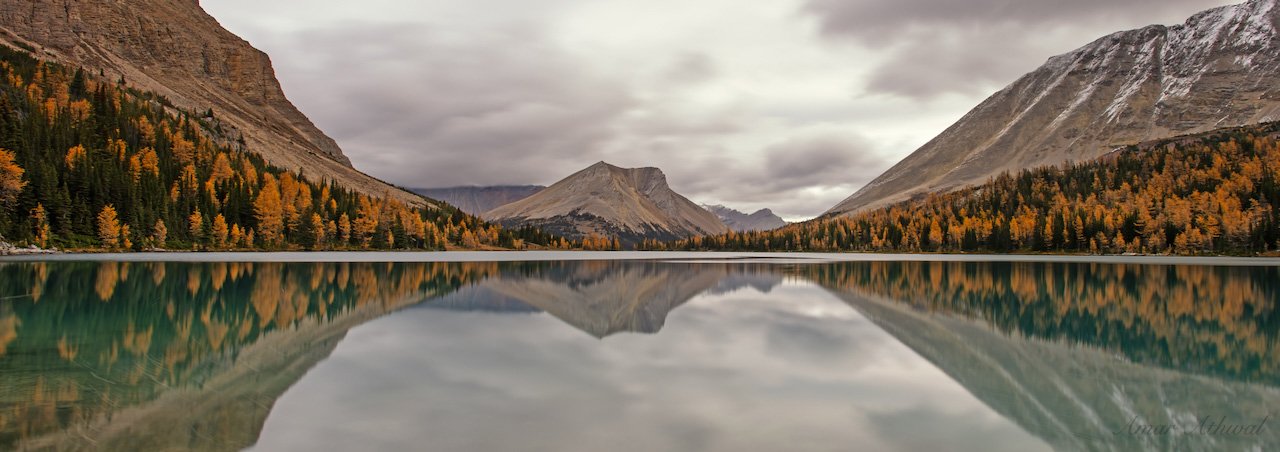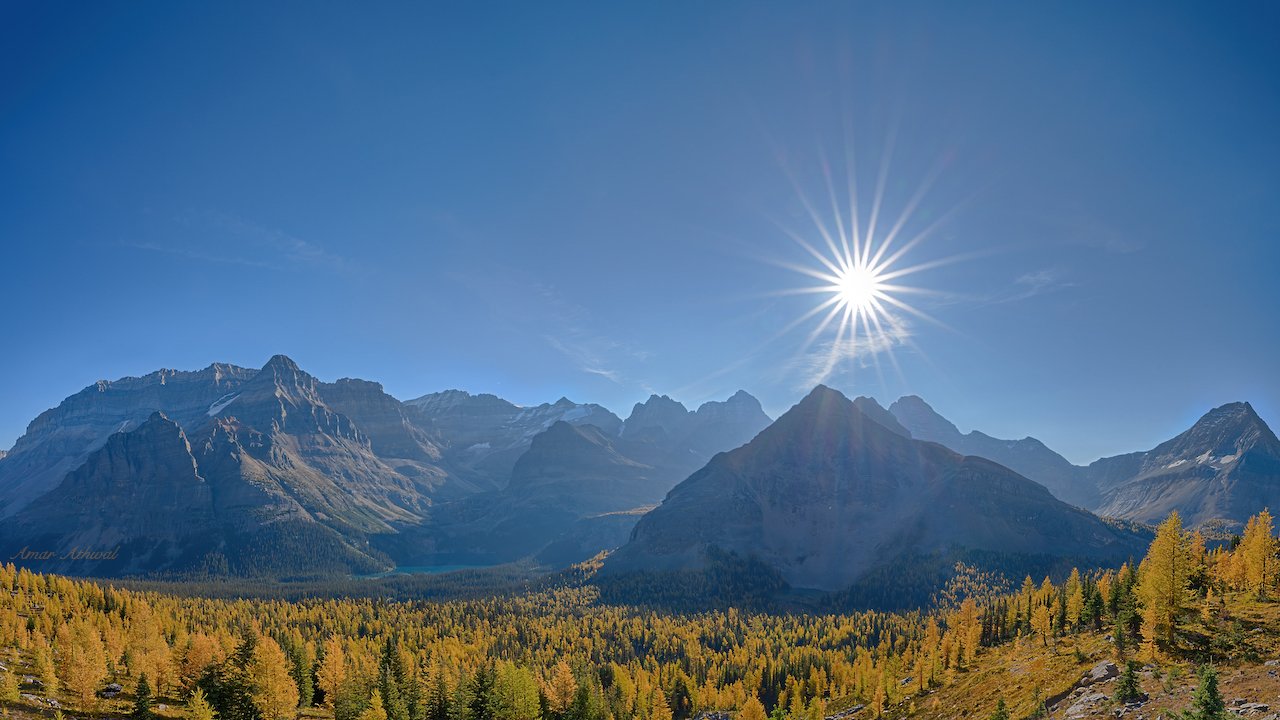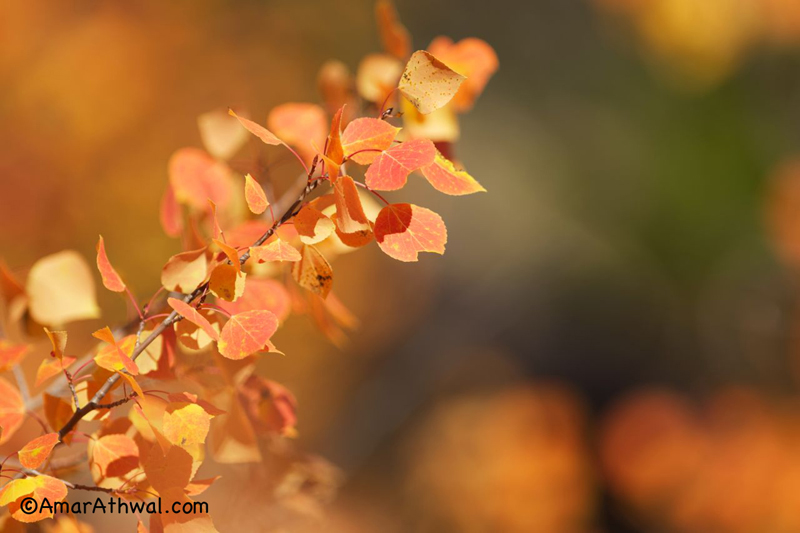Another fall colour season is behind us in the Canadian Rockies. I got some good hiking done to see the fall colours in the valleys and higher up. As always, each hike was different. On my return from one hike from a pass to the parking lot, I encountered 315 people and 41 dogs in an hour and a half. I beat my old record of 11 dogs. Birds most spotted or heard were Pine Grosbeaks, Mountain Chickadees, Golden-crowned Kinglets and hanging out by the trail with a bit of attitude, Spruce Grouses. The surprise bird encounter was two Bald Eagles perched on the larch trees next to a small alpine lake. Unfortunately, they saw me before I saw them. They were in the air before getting any pictures. For mammals, nothing bigger than red squirrels.
For this picture, it was a hike past Boulder Pass. A nice break from the previous well loved Lake Louise area hike. Throughout the whole hike, I saw less than 30 hikers, and one baby blanket by the side of the trail. Whose owner was quickly found. It was a cold morning, which is great for hiking. I was happy to get to the lake, the wind was just starting to pick up. I still had to take 20 to 25 seconds long exposures to get a calm water look to my side of the lake. Once the pictures were out of the way, it was time to put on a few layers and sit back to enjoy the views and my first food of the day. Another great fall hiking season is behind me. But I have a lot of images and the larch needles I will keep coming across in my pack and outerwear to remind me of the great hikes until next year.





















